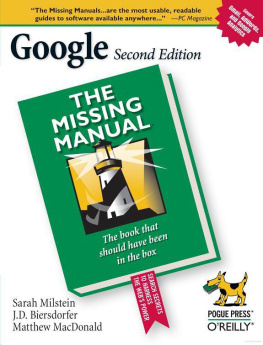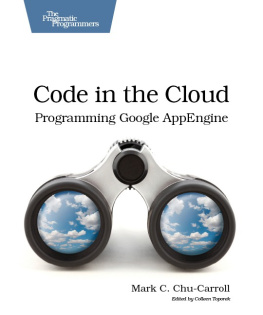Preface
On the Internet, popularity is swift and fleeting. A mention of your website on a popular blog can bring 300,000 potential customers your way at once, all expecting to find out who you are and what you have to offer. But if youre a small company just starting out, your hardware and software arent likely to be able to handle that kind of traffic. Chances are, youve sensibly built your site to handle the 30,000 visits per hour youre actually expecting in your first 6 months. Under heavy load, such a system would be incapable of showing even your company logo to the 270,000 others that showed up to look around. And those potential customers are not likely to come back after the traffic has subsided.
The answer is not to spend time and money building a system to serve millions of visitors on the first day, when those same systems are only expected to serve mere thousands per day for the subsequent months. If you delay your launch to build big, you miss the opportunity to improve your product by using feedback from your customers. Building big before allowing customers to use the product risks building something your customers dont want.
Small companies usually dont have access to large systems of servers on day one. The best they can do is to build small and hope meltdowns dont damage their reputation as they try to grow. The lucky ones find their audience, get another round of funding, and halt feature development to rebuild their product for larger capacity. The unlucky ones, well, dont.
But these days, there are other options. Large Internet companies such as Amazon.com, Google, and Microsoft are leasing parts of their high-capacity systems by using a pay-per-use model. Your website is served from those large systems, which are plenty capable of handling sudden surges in traffic and ongoing success. And since you pay only for what you use, there is no up-front investment that goes to waste when traffic is low. As your customer base grows, the costs grow proportionally.
Google App Engine, Googles application hosting service, does more than just provide access to hardware. It provides a model for building applications that grow automatically. App Engine runs your application so that each user who accesses it gets the same experience as every other user, whether there are dozens of simultaneous users or thousands. The application uses the same large-scale services that power Googles applications for data storage and retrieval, caching, and network access. App Engine takes care of the tasks of large-scale computing, such as load balancing, data replication, and fault tolerance, automatically.
The App Engine model really kicks in at the point where a traditional system would outgrow its first database server. With such a system, adding load-balanced web servers and caching layers can get you pretty far, but when your application needs to write data to more than one place, you have a hard problem. This problem is made harder when development up to that point has relied on features of database software that were never intended for data distributed across multiple machines. By thinking about your data in terms of App Engines model up front, you save yourself from having to rebuild the whole thing later.
Often overlooked as an advantage, App Engines execution model helps to distribute computation as well as data. App Engine excels at allocating computing resources to small tasks quickly. This was originally designed for handling web requests from users, where generating a response for the client is the top priority. With App Engines task queue service, medium-to-large computational tasks can be broken into chunks that are executed in parallel. Tasks are retried until they succeed, making tasks resilient in the face of service failures. The App Engine execution model encourages designs optimized for the parallelization and robustness provided by the platform.
Running on Googles infrastructure means you never have to set up a server, replace a failed hard drive, or troubleshoot a network card. And you dont have to be woken up in the middle of the night by a screaming pager because an ISP hiccup confused a service alarm. And with automatic scaling, you dont have to scramble to set up new hardware as traffic increases.
Google App Engine lets you focus on your applications functionality and user experience. You can launch early, enjoy the flood of attention, retain customers, and start improving your product with the help of your users. Your app grows with the size of your audienceup to Google-sized proportionswithout having to rebuild for a new architecture. Meanwhile, your competitors are still putting out fires and configuring databases.
With this book, you will learn how to develop applications that run on Google App Engine, and how to get the most out of the scalable model. A significant portion of the book discusses the App Engine scalable datastore, which does not behave like the relational databases that have been a staple of web development for the past decade. The application model and the datastore together represent a new way of thinking about web applications that, while being almost as simple as the model weve known, requires reconsidering a few principles we often take for granted.
This book introduces the major features of App Engine, including the scalable services (such as for sending email and manipulating images), tools for deploying and managing applications, and features for integrating your application with Google Accounts and Google Apps using your own domain name. The book also discusses techniques for optimizing your application, using task queues and offline processes, and otherwise getting the most out of Google App Engine.
Using This Book
App Engine supports three technology stacks for building web applications: Java, Python, and Go (a new programming language invented at Google). The Java technology stack lets you develop web applications by using the Java programming language (or most other languages that compile to Java bytecode or have a JVM-based interpreter) and Java web technologies such as servlets and JSPs. The Python technology stack provides a fast interpreter for the Python programming language, and is compatible with several major open source web application frameworks such as Django. The Go runtime environment compiles your Go code on the server and executes it at native CPU speeds.
This book covers concepts that apply to all three technology stacks, as well as important language-specific subjects for Java and Python. If youve already decided which language youre going to use, you probably wont be interested in information that doesnt apply to that language. This poses a challenge for a printed book: how should the text be organized so information about one technology doesnt interfere with information about the other?
Foremost, weve tried to organize the chapters by the major concepts that apply to all App Engine applications. Where necessary, chapters split into separate sections to talk about specifics for Python and Java. In cases where an example in one language illustrates a concept equally well for other languages, the example is given in Python. If Python is not your language of choice, hopefully youll be able to glean the equivalent information from other parts of the book or from the official App Engine documentation on Googles website.
As of this writing, the Go runtime environment is released as an experimental feature, and the API may be changing rapidly. The language has stabilized at version 1, so if youre interested in Go, I highly recommend visiting the Go website and the Go App Engine documentation. We are figuring out how to best add material on Go to a future edition of this book.

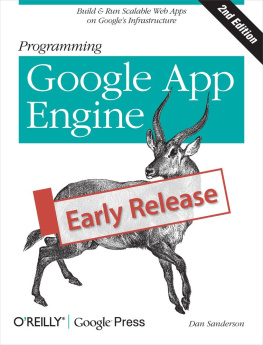



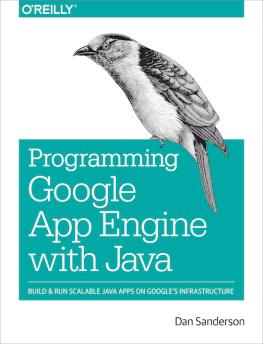
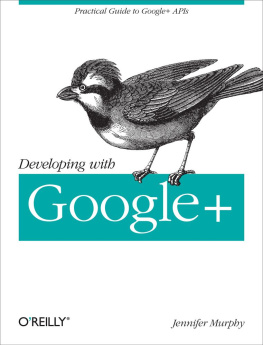
![Cohen Marc - Google compute engine: [managing secure and scalable cloud computing]](/uploads/posts/book/193829/thumbs/cohen-marc-google-compute-engine-managing.jpg)

